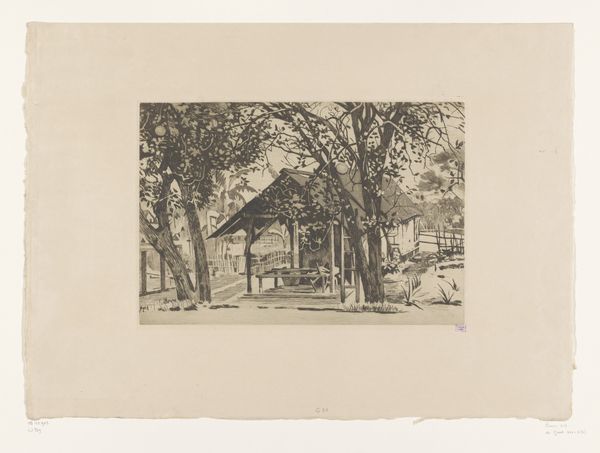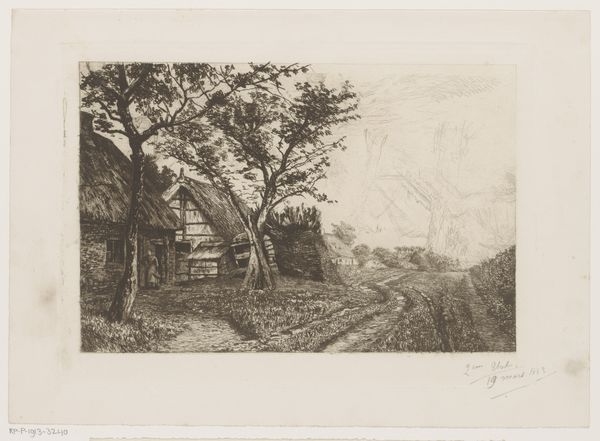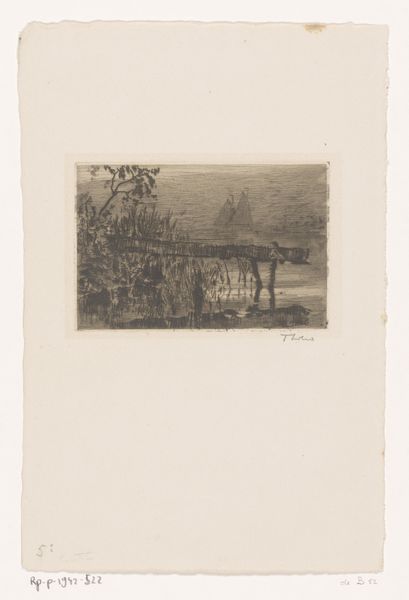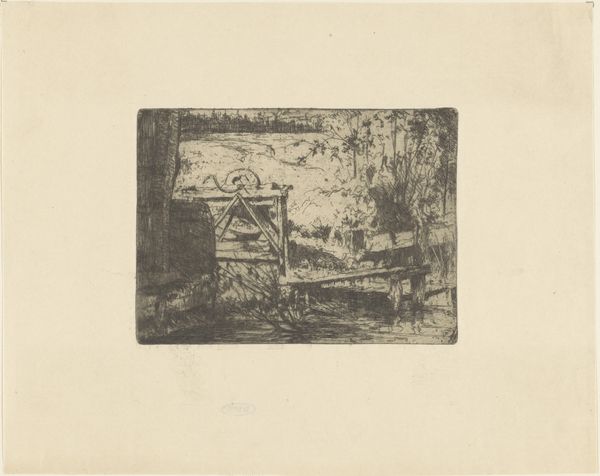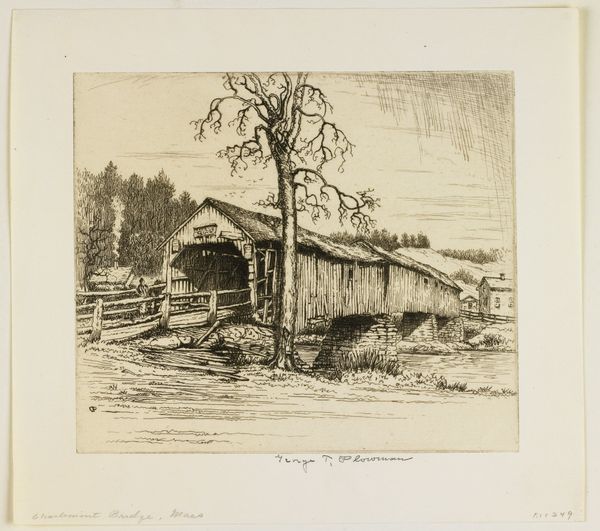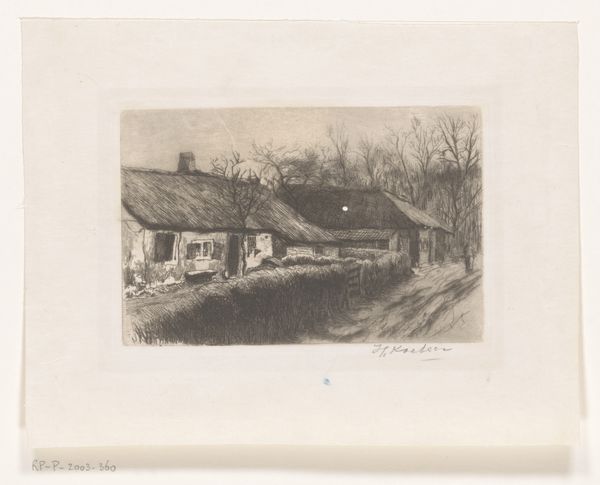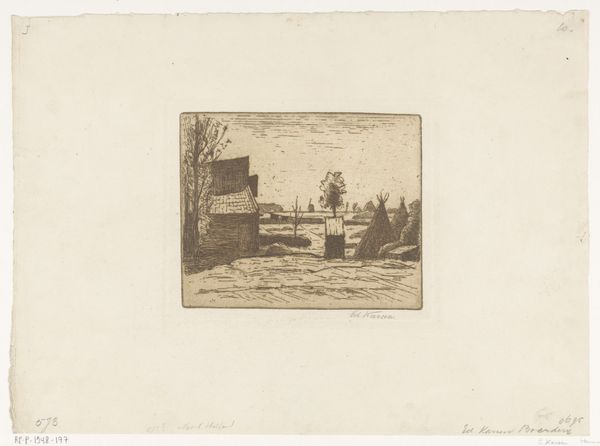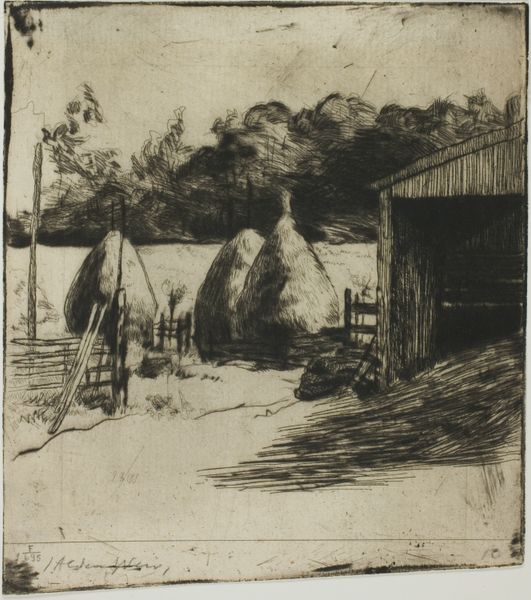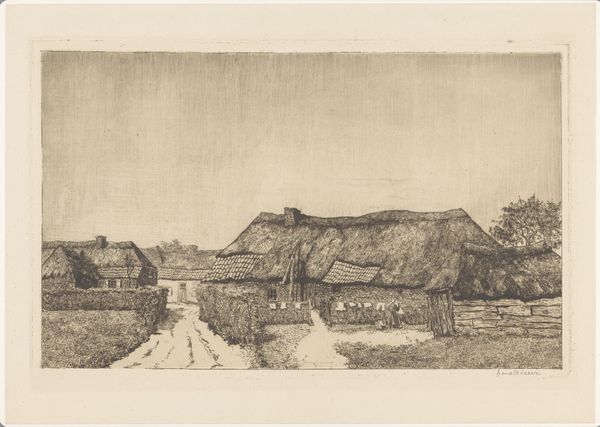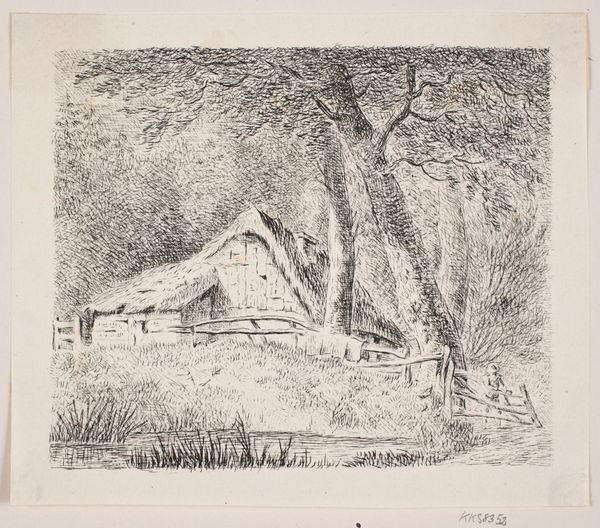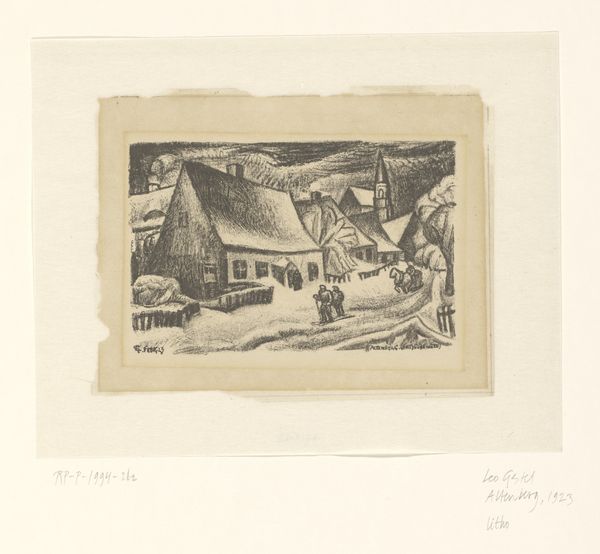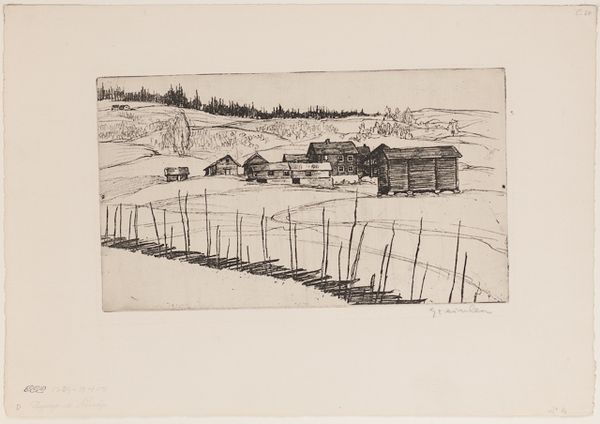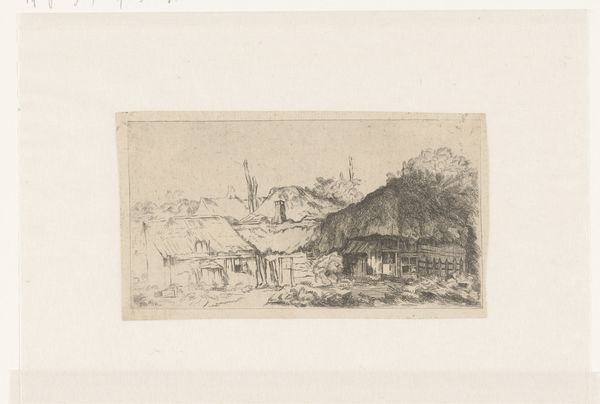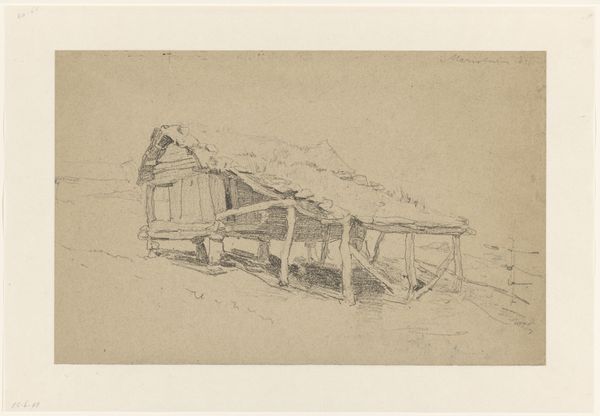
print, etching
# print
#
etching
#
landscape
#
etching
#
realism
Dimensions: 7 3/8 x 6 3/8 in. (18.73 x 16.19 cm) (plate)9 9/16 x 8 1/2 in. (24.29 x 21.59 cm) (sheet)
Copyright: Public Domain
Curator: This etching, known as "Deerfield Bridge," is the work of George Taylor Plowman, likely created sometime in the late 19th century. Editor: Immediately, I’m struck by the stark contrast—the shadowy bridge against the nearly white road leading up to it. The etching is rich with detail, especially in the textures of the wood and foliage. It gives off a quiet, contemplative mood. Curator: Indeed. Consider the historical context. Covered bridges were essential to rural communities, protecting travelers from harsh weather. This scene, likely depicting Deerfield, Massachusetts, speaks to a time when these structures served as vital social and economic links. The lone figure by the bridge subtly evokes the solitude and resilience often associated with rural life. Editor: Yes, and Plowman’s technical skill enhances that feeling. The use of hatching and cross-hatching to build up the tones is masterful, creating a tangible sense of depth and atmosphere. Notice how the delicate lines suggesting the distant trees contrast with the bolder strokes defining the bridge's architecture. Curator: Absolutely, the formal elements cannot be divorced from their sociopolitical context. Covered bridges weren't merely architectural feats; they fostered a sense of place and community. Understanding how these structures functioned within the daily lives of people – particularly women, people of color and poor communities whose histories are often marginalized - allows for a more nuanced interpretation of Plowman's composition. The very act of covering the bridge changed how it was experienced and perhaps by whom it was accessed. Editor: I concede that adds another layer. But focusing solely on these issues risks overlooking Plowman's manipulation of light and shadow, and how this directs the viewer's gaze. The bridge becomes less a functional object and more a study in formal aesthetics. It invites purely optical observations that give one the sensation of standing right there with the man. Curator: It's about integrating those understandings. It encourages us to consider how artistic choices also reflect the values of their time, potentially even perpetuating specific power dynamics and/or romanticizing the relationship of the rural populations to land. Editor: Well, for me, the work provides visual respite through form and its tonal variation in a landscape. Curator: And perhaps for others, it offers a moment to reflect on how these seemingly simple structures played a significant role in shaping our understanding of community and mobility within America.
Comments
No comments
Be the first to comment and join the conversation on the ultimate creative platform.
